The Tropicana was once 'the Tiffany of the Strip.' For former showgirls, it was home.
The first time Maryann Picchi saw the Folies Bergere show at the Tropicana, she knew she belonged on that stage.
The year was 1970, and Picchi, then 25, was stunned by the big sets. The showgirls in beautiful gowns and sparkling sequins. The live orchestra that filled the room with sweeping music. For someone who had been dancing since she was 3, it was a dream job.
“I thought that would be more exciting than being a dancer on a TV show or in the movies. This was every night. I could dance every night," said Picchi, now 79.
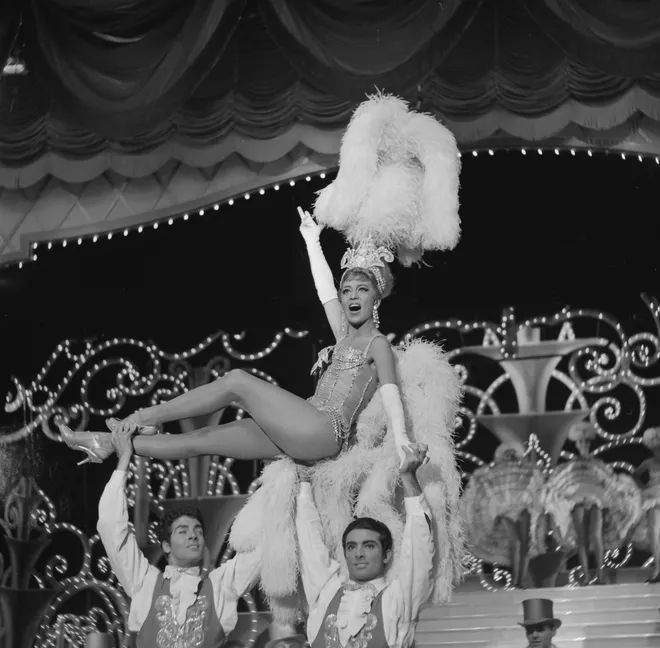
Picchi landed a job as a dancer with the Folies Bergere later that year, and the Tropicana became her second home. More than five decades later, the property is going the way of other iconic casinos like the Dunes and the Stardust: in a cloud of dust. Its implosion is planned for early Oct. 9.
But for former Folies Bergere performers like Picchi, memories of the sequin-studded show's extravagance and close crew will never die.
A Las Vegas icon
The longest-running show in Las Vegas history, the Folies Bergere opened in 1959, two years after the Tropicana opened its doors.
Showgirl revues thrived in Vegas at the time. Minsky's Follies opened the city's first topless show at the Dunes in 1957 after being run out of New York for being too raunchy. Lido de Paris Revue was imported from France next, with a 1958 opening at the Stardust. Folies Bergere made its debut the following year, promising "an elegant evening of sensual entertainment," according to "The Folies Bergere in Las Vegas" by Karan Feder.
The Las Vegas Sun at the time described it as “the most dazzling entertainment which any city has been privileged to see."
“This was a particular entertainment genre that the folks that came to visit Las Vegas really were attracted to,” Feder, president of Entertainment Exhibitions, an advisory firm specializing in entertainment and performance costumes, told USA TODAY. “That visual legacy (from showgirls) has really stuck and come to define Vegas, and I think the Folies Bergere is one of the most important shows for establishing that legacy.”
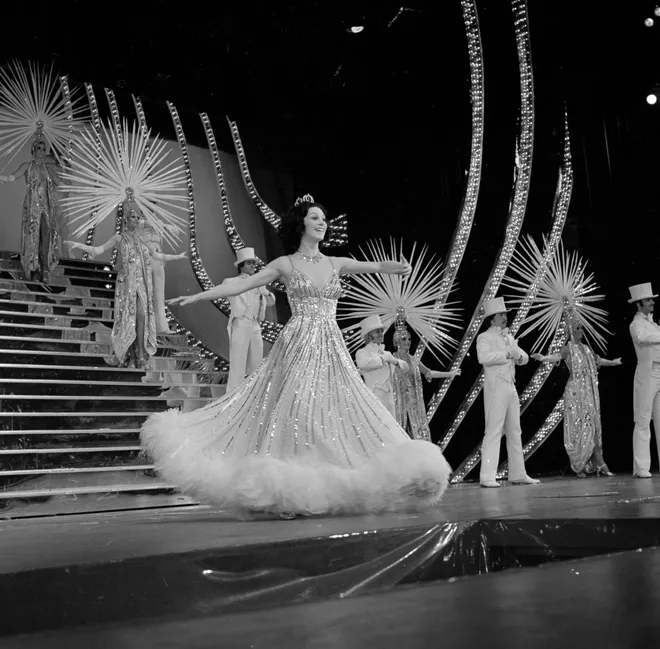
Teri Thorndike, 76, recalls working two – sometimes three – shows a night in the ‘70s, but the job was often as much fun as it was work.
The first drink of the night would often come between shows, with management encouraging showgirls to dress up and grab a cocktail at the lounge between sets.
"We were given free range of whatever we wanted. If we wanted to drink all night long, we could," Thorndike said.
Then, after the last show wrapped, Thorndike said she and other performers would dance the rest of the night away at disco clubs on the Strip, sometimes bumping into celebrities like Sonny and Cher.
“You would think after dancing all night long, you wouldn’t want to dance," she said. "But it’s different when you go out.”
Clark County had fewer than 300,000 residents at the time, which Thorndike said gave Las Vegas a small-town feel. It wasn’t uncommon for her to see a friendly wave from Mr. Las Vegas himself – singer and actor Wayne Newton, who worked with her husband at the time – as their cars passed.
“That's just how it was back then. Everybody knew one another,” she said.

A double life
While nights were for the show and social life, some performers would spend their days raising families or attending school.
Picchi, who had an infant when she started working as a dancer, said she would sometimes have her son play under her dressing room table with toys during their first performance, then drop him off at home between shows once the babysitter was available.
“It was kind of tough being a mom and nighttime performer,” she said. “But I wasn’t the only one.”
Lauri Thompson, the principal dancer for the show from 1985 to 1997, would fly between Las Vegas and California five times a week in the ’90s to attend law school at the University of San Diego.
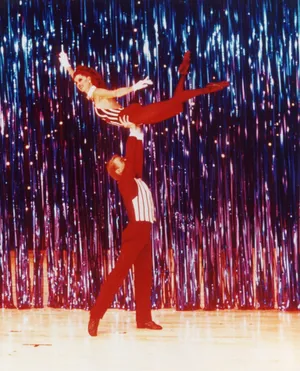
Round-trip flights cost her about $50 in those days, and less stringent airport security meant it took her just two hours to get from her home in Las Vegas to her classroom in California.
“(I would) study until the show started and then in between the shows," she said. "(Then I would) get up at 6, and get on the flight out and study on the plane, then study home on the plane."
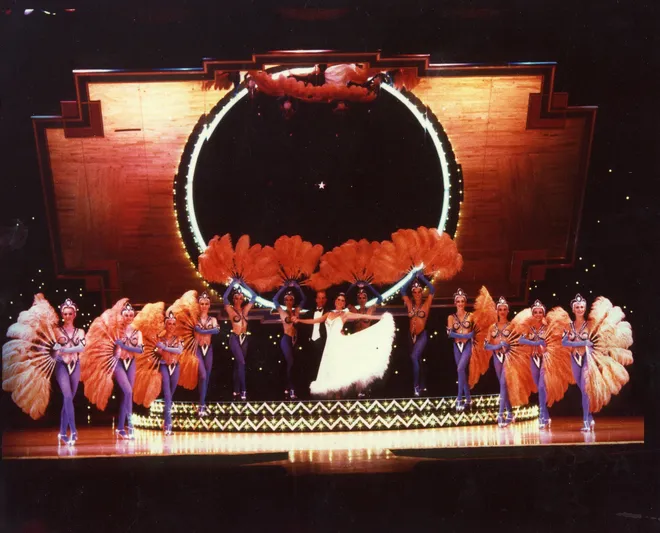
She missed just one Folies Bergere show throughout four years of flying back and forth, when heavy fog delayed her flight. When she did make it back to the Tropicana, she said, she had to talk her boss into keeping her job.
"I already had enough money to pay for law school and pay for my flights back and forth. I just wasn't ready to quit performing. It had been part of my life from 9 years old to 37,” she said.
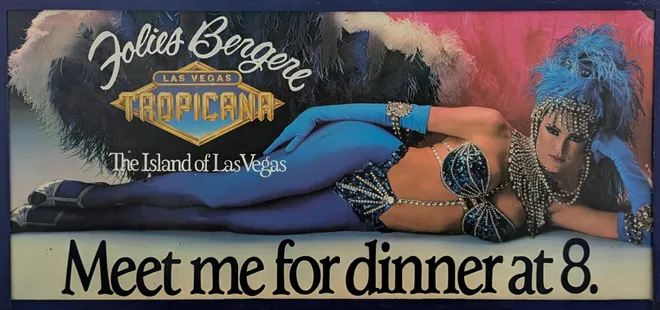
'We don't quit'
Working six days a week led to a tight-knit cast. Performers would spend time together on stage and off, taking trips to nearby Lake Mead and Mount Charleston to relax. And with so few days off work, birthdays were celebrated backstage with a cake in between shows in the dressing room, according to Picchi, the former dancer.
“I still have friendships with my cast members from the ‘70s,” she said. “All of the performers – all of the males, the acrobats, the male dancers, the girls, the showgirls – we were all very much a big family.”
Ron Dakar, lead singer of the show between 1985 and 1999, added a group of a dozen or so get together "religiously."
"Like once every two weeks," Dakar said. "It's just such a cool thing to be a part of."
But the show wasn't all fun and games.
Alan Clancy, a former acrobat, said performing two shows a night on the show’s original cement stage took a toll on their bodies.
“There was no spring. It just went right through your body. So many acrobats ruined their knees,” he said, adding that performers used to get Vitamin B shots to fight exhaustion. “The shows were very difficult, but it was the most wonderful place I could be.”
Feder of Entertainment Exhibitions said she heard of “a lot” of neck issues from showgirls who performed with heavy headdresses covered during her time as a guest curator for the Nevada State Museum. With a wire frame and plenty of rhinestones and feathers, Feder said she weighed one headdress as 6 pounds.
“There’s an art to making it look like it’s nothing and still making your choreography look fantastic,” she said. “They truly are athletes.”
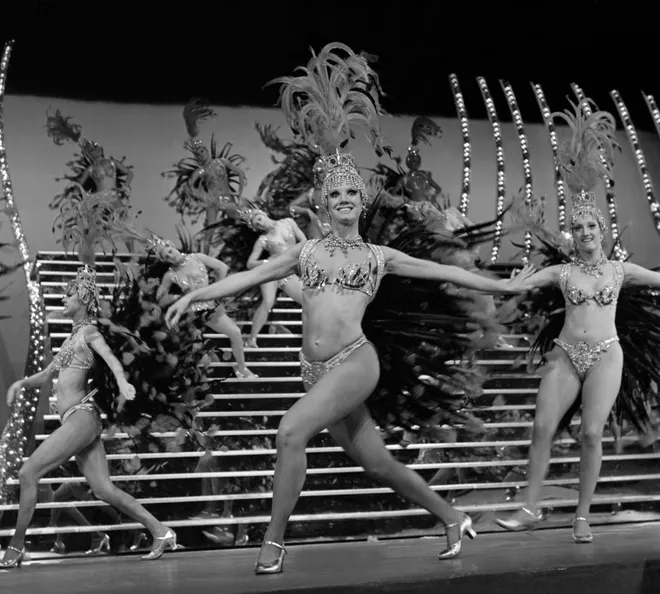
Denise Rapuano-Kriese, a showgirl from 1982 to 2005, said the dancers were workhorses.
“We don’t quit,” she said. “There were days when you don’t feel good, and you still have to do it. You have a tummy ache, you still have to go on."
Then there was the pressure to always look the part. Rapuano-Kriese said the showgirls would need to weigh in when hired, and management would keep tabs on their weight – especially after the holidays. If a showgirl had put on a few pounds, she said, she could be suspended.
“When you’re dancing and you’re in a little costume, you cannot hide it,” she said, noting that she had to avoid her Italian family’s pasta for years to keep to a strict diet. “There were people who had eating problems. I feel lucky that I don’t have one.”
Working under the Mafia
Clancy, who performed as an acrobat for the show from 1975 to 1980, remembers the Tropicana as a “beautifully run casino.”
Some of the people running it just so happened to be connected to the Mob.
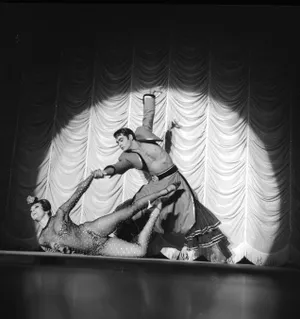
The FBI in 1979 exposed a skimming operation led by the producer of the Folies Bergere, Joe Agosto, that was funneling money to Nicholas Civella's Kansas City Mob family. The property eventually was sold to Ramada Inns, but Clancy remembers the days under the Mob.
“The Mafia would come backstage with a cigar and say, ‘Good job guys,’” Clancy said. He said he'd heard rumors of “the horrible things” the Mafia was doing but thought they were good to their performers.
“I don’t know where they got their good taste from, but somehow they knew how to hire the right people that would bring the people to the desert," he said. "How do you get people to the desert? You bring the most beautiful people in the world and the best shows in the world, which they did.”
There was a certain class to the city when the Mob ran things, added Thorndike, who misses the days when people would dress up to go to the casino. Now, she said, she'll see hair rollers in the casinos instead of furs and jewels.
"It’s more of a circus (today),” she said. “I was here when the Mob was here, and the Mob would never allow that.”
But things changed. Corporations took over the Strip. Cirque du Soleil replaced French showgirl revenues as the go-to entertainment. And in April, the Tropicana shut its doors for good. Its implosion this week is planned to make room for the Athletics’ new ballpark following the MLB team's move from Oakland, California.
“It’s so sad,” Thorndike said. “That was my home, off and on, for 20 years."
"It's crushing to all of us," added Joe Macchiaverna, who sang for the Folies Bergere from 1983 to 1986.
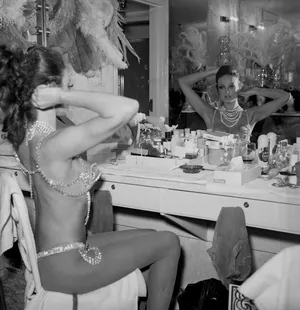
Others see the Tropicana’s fall as a sign that Vegas continues to evolve as an entertainment powerhouse.
The three other resorts Thompson used to work in have already been torn down, and she said their fall made room for bigger and better things for Vegas. The Desert Inn’s demolition made room for the Wynn Las Vegas, and the Hacienda’s fall led to Mandalay Bay.
“I’m always looking forward to the future and what we can do next. What’s even better, and can stand on the shoulders of those giants,” Thompson said. “It’s exciting for us to know that this city will live on and keep recreating itself, and entertainment is always going to be very important part of this community."
Clancy said the Tropicana he knew was long gone before its closing was ever announced. The structure – once called the “Tiffany of the Strip” for its grandeur and $15 million price tag – had begun to pale in comparison to the new megaresorts now commonplace on the Strip.
“It’s time to blow up, get rid of it. And all the memories will never go away,” Clancy said. “It’s kind of like the Mona Lisa. It will never die.”
Disclaimer: The copyright of this article belongs to the original author. Reposting this article is solely for the purpose of information dissemination and does not constitute any investment advice. If there is any infringement, please contact us immediately. We will make corrections or deletions as necessary. Thank you.





